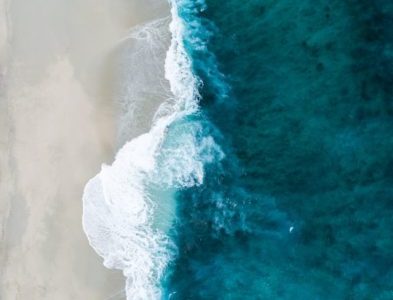Renewable energy is essential for companies and governments seeking to fulfill their commitments to reduce climate impact. And tidal energy, while still a very small percentage of overall energy production, is rapidly growing.
There are two major types of tidal technology. Barrage technology uses the potential energy created by the difference in water height between high and low tide. Barrage projects have been used since the 1960s, but investment in them has decreased due to limited site availability.
Tidal stream technology, which is expected to be the dominant technology in the future, uses the incoming and outgoing flow of water. A tidal stream is the continuous horizontal flow of water through our oceans caused by rising and falling tides. Tides are created by the gravitational pull of the moon (and sun) along with the earth’s rotation.
Unlike wind or solar energy, tidal energy is continuous and has a high energy density. Water is approximately 800 times denser than air, providing a compact and powerful energy source that delivers more power per square meter than wind or solar.
Tidal installations – underwater turbines that are either moored to the seabed or attached to the underside of a floating object to drive a generator – use significantly less space when compared to solar arrays.
However, tidal energy can’t be produced everywhere. Ideal locations are where the differences between high and low tide create strong currents and where tidal channels become smaller and thus make the current stronger.
Currently, the United States has no commercially operating tidal energy power plants, although there are demonstration projects in the Cook Inlet of Alaska and Maine. However, large power plants operate in Europe, Canada, and South Korea, with projects in the pipeline for Australia and Indonesia. Estimates predict that up to 11% of the United Kingdom’s energy needs could be met with tidal energy.
This goal could be realized through projects such as the Orbital O2, made by Orbital Marine Power in the Orkney Islands of Scotland. It is currently the most powerful tidal turbine in the world. The O2 is longer than a Boeing 747 airplane, weighs 680 tons, and skims the surface of the water but has only 20-meter rotor blades. For comparison, modern land-based wind rotor blades are about 52 meters long, and off-shore wind blades are about 107 meters.
It is anchored to the seabed by giant chains and transmits power to shore and the grid through massive cables. Attached to two movable arms, the rotor blades transmit the kinetic energy of the water through the main drive-train to the generator. The angle of the blades can be adjusted between tide cycles to whichever direction the current is moving. As a result, the O2 continuously generates 2,000 megawatts (MW), enough to power roughly 2,000 homes.
As for maintenance, the movable arms can be raised above the water, eliminating the need for extremely expensive underwater repairs. Plus, the O2 can be moved to shore with only a tugboat, and the smaller than land-based rotor blades also help to reduce cost.
To grow, tidal energy companies need to reduce energy costs through scale and technology-driven efficiency improvements. And an increasing number of companies globally are entering the market. Current market leaders in underwater turbines show that companies are pursuing various technologies to find the best solution for different use cases.








